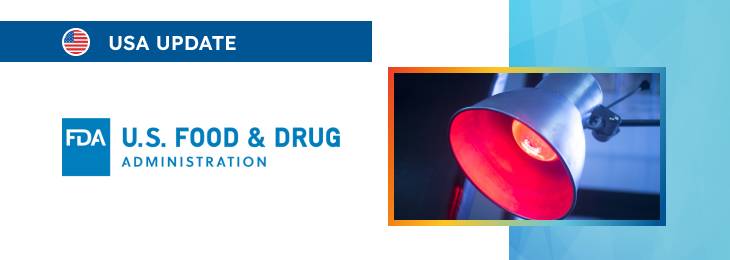The new article outlines specific aspects associated with the evaluation of medical devices impacting the tissue temperature including, inter alia, the ones related to computational modeling as one of the assessment methods to be used.

Table of content
The Food and Drug Administration (FDA or the Agency), the US regulating authority in the sphere of healthcare products, has published a draft guidance document dedicated to the evaluation of thermal effects of medical devices that produce tissue heating and/or cooling.
Once finalized, the guidance will provide an overview of the applicable regulatory requirements, as well as additional clarifications and recommendations to be taken into consideration by medical device manufacturers and other parties involved in order to ensure compliance thereto.
At the same time, it is important to mention that provisions of the guidance are non-binding in their legal nature and they are not intended to introduce new rules or impose new obligations. Moreover, the authority explicitly states that an alternative approach could be applied, provided such an approach is in line with the existing legal framework and has been agreed with the authority in advance.
The scope of the guidance covers, inter alia, the aspects of computational evaluation for assessing tissue effects and thermal energy spread due to medical devices. The main focus of the document is on computational methods, estimations of thermally affected tissue regions, thermal energy spread, and clinical evaluations.
Computational Evaluation of Tissue Effects and Thermal Energy Spread
The FDA additionally mentions the importance of employing computational models to evaluate tissue effects and thermal energy spread, emphasizing the need for these models to replicate clinically relevant conditions.
According to the guidance, this evaluation must encompass the full range of spatio-temporal temperature distributions, aligning with the device’s specific indications for use. The methodology should account for the minimum, average, and worst-case scenarios to ensure comprehensive coverage.

Developing Computational Models
Key to this evaluation is the development of a detailed computational model. This entails defining the control volume with precise imaging methods, segmentation, and identification of tissue types, including their geometric and dimensional characteristics.
The initial and boundary conditions set must reflect those encountered clinically, ensuring the model’s relevance and applicability.
Estimating Thermally Affected Tissue Region
The estimation of the thermally affected tissue region is a vitally important component, so the recommendations are to use temperature thresholds or thermal dose models validated against the tissues of interest. This approach should yield detailed dimensions of the affected areas, providing a clear understanding of the device’s impact under varying conditions.
Estimating Thermal Energy Spread
Estimations of thermal energy spread can be derived from bioheat transfer models or empirical thermal models that have been appropriately validated. These models are vitally important for predicting the spatio-temporal temperature distributions accurately, catering to the specific indications for use and tissue types involved.
Clinical Evaluation
The authority further explained that in cases where non-clinical and animal thermal effects studies do not sufficiently substantiate the device’s safety and effectiveness, clinical data may become necessary. Such studies should be designed to cover the full spectrum of device settings and use conditions within the intended patient population, emphasizing the safe conduct of the study.
Labeling Recommendations
The FDA encourages the parties responsible for medical devices covered by the scope of the guidance to include detailed charts or graphs in the device’s labeling, illustrating the dimensions of the thermally affected tissue regions across different power settings and activation durations.
As explained by the authority, this transparency is vitally important for informing users about potential damage, thereby enhancing the device’s safe application.
Conclusion
In summary, the present guidance on computational evaluations provides a robust framework for assessing the thermal effects of medical devices. By detailing the process from model development to clinical evaluation, the guidance outlines the methods to be used to ensure that devices are evaluated thoroughly to predict their thermal impact accurately.
How Can RegDesk Help?
RegDesk is an AI-powered Regulatory Information Management System (RIMS) designed to simplify global compliance for medical device companies. With regulatory intelligence covering 120+ markets, RegDesk helps you prepare and publish global submissions, manage standards, conduct impact assessments, and stay ahead of regulatory changes all from a single, centralized platform. Expanding into new markets has never been easier.

